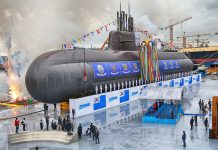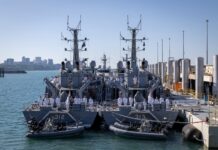
The Australian Strategic Policy Institute has published a new report examining the serious threat posed by the Chinese People’s Liberation Army’s anti-ship missiles.
Vampire, Vampire, Vampire: he PLA’s anti-ship missile threat to Australian and allied naval operations is written by Dr Sam Goldsmith.
The report examines anti-ship cruise missiles (ASCM) possessed by the People’s Liberation Army (PLA), and the serious threat they pose to Australian and allied naval forces operating in the Indo-Pacific region.
The PLA has spent over 20 years preparing to fight and win wars against technologically advanced adversaries, such as the United States and its allies. Preparations have included long-term investments in various capabilities that would be needed to facilitate and sustain ASCM strike operations, even whilst under heavy attack from technologically advanced powers.
‘Australia has arguably been caught napping on the job; decades of uncontested US strategic primacy has shielded Australia from the consequences of complacency and underinvestment in its national defence’, writes Dr Goldsmith.
‘With US strategic primacy being actively contested, if not eroded, Australia must face up to a future that looks increasingly dangerous and uncertain. The time for major changes was 10 years ago; but now, wholesale changes are well overdue.’
The report found that PLA ASCMs threaten Australian and allied naval forces in four ways:
- ASCMs are difficult to detect due to their line-of-sight radar limitations and stealthy design features;
- High terminal speeds, manoeuvrability, swarm technology, decoys and countermeasures increase the probability that ASCMs might penetrate surface-ship and air defences;
- ASCM saturation attacks would either sink ships or leave ships with severely depleted missile magazines; and
- Terrorist groups have previously accessed and used PLA ASCM technology, which raises the prospect of ASCM use by sub-state groups.
The report recommends that a series of upgrades be made to Australia’s naval capability. In the short-term, this involves upgrades to enhance the survivability of existing surface ships; in the medium term, a mix of crewed and uncrewed assets to underpin offensive naval and air defence operations; and in the long-term, disrupting the PLA’s ability to find, track and engage naval assets with ASCMs.



